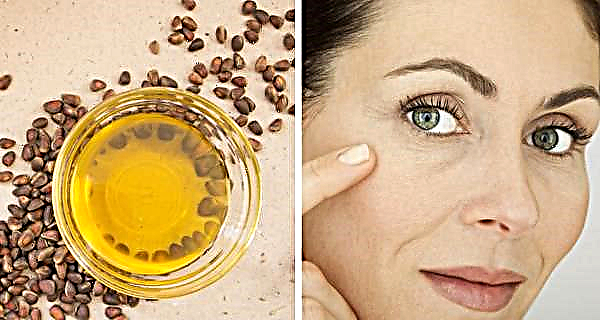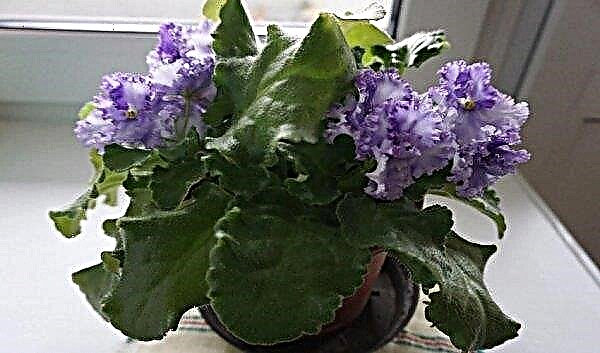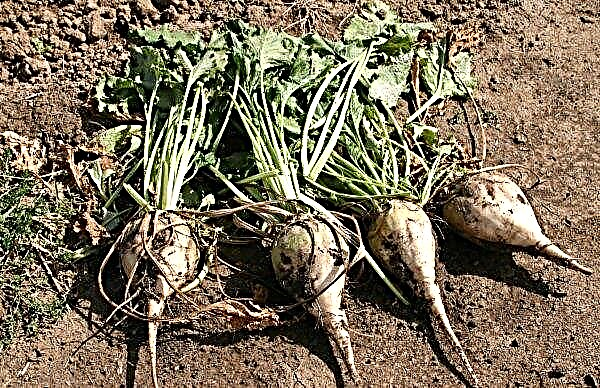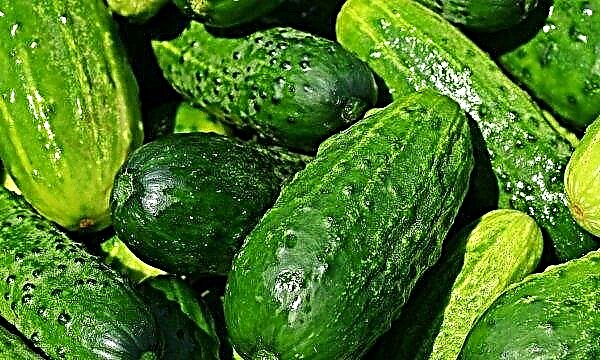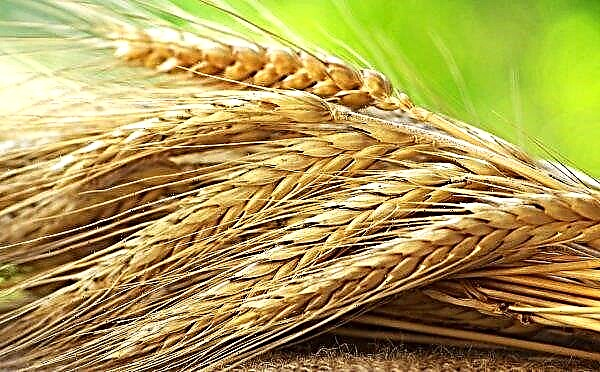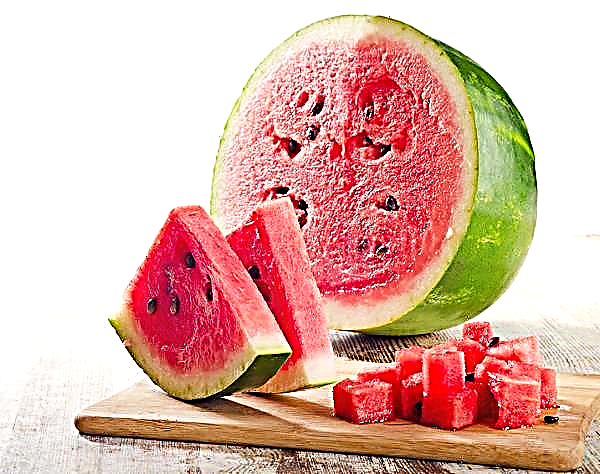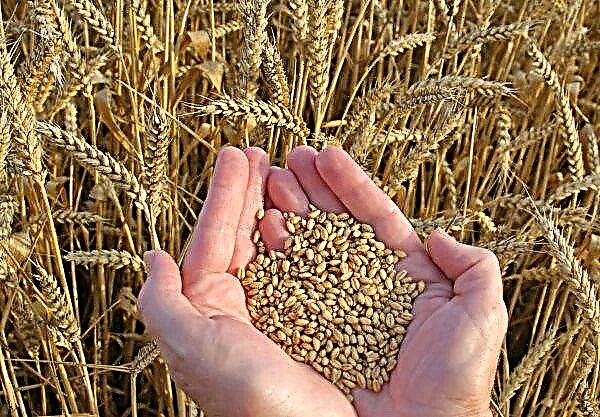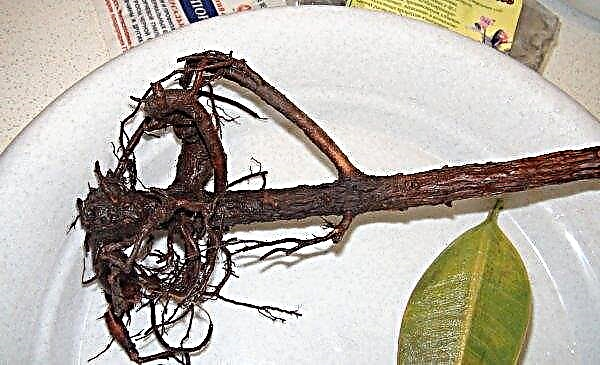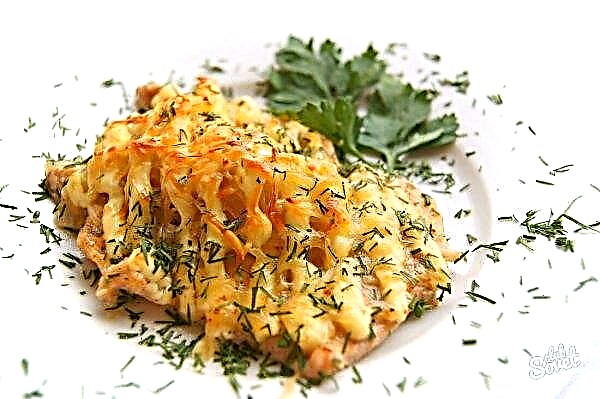Today there are many breeds of poultry that attract attention with the features of their appearance. For example, representatives of the Indian runner breed, with an almost vertical body position, can be called unusual ducks. With a sufficiently high egg production, these birds differ in very tender and tasty meat, so each poultry farmer needs to know more about the peculiarities of caring for them and their competent maintenance.
Origin history
Unfortunately, it is not known exactly where and when the representatives of this breed appeared, but some scientists consider Indian runners to be one of the oldest breeds of domestic ducks bred in India. It is possible that among their ancestors there were penguin ducks, but this fact is not exactly proven. The only thing that can be said with greater certainty is the time that birds entered European territory.
Did you know? There are no blood vessels or nerve endings in duck legs. That is why birds can swim in ice water without freezing their paws.
For example, they were brought to England in the 18th century, and a hundred years later Indian birds also came to Germany. In Russia, they began to breed in the 20s of the twentieth century, where they are still found today in many private courtyards.
Breed description
The most unusual characteristic of ducks of this breed is justifiably considered to be an elongated, even “bottle” body shape, but in addition to this, birds have something to surprise a person.
Appearance
The entire exterior of the Indian runners testifies to their lightness and maneuverability when walking. This slender and tall bird has a rounded chest and a smooth plumage that merges well with the body. The wings are of medium length, but the legs look quite long. While ducks of other breeds are hard to roll when walking from side to side, Indian runners do not just walk, but really run, quickly overcoming the territory of the yard. Like many of their other relatives, they are very fond of swimming, but even in the absence of water they will not yearn, calmly adapting to any conditions.
Like many of their other relatives, they are very fond of swimming, but even in the absence of water they will not yearn, calmly adapting to any conditions.
Color differences
The color of the plumage of these birds can be the most diverse: from motley to almost monophonic. The most common color options are presented in the table below:
| Type of color | Description |
| Trout | The general color of the plumage of males consists of 3-4 different shades: in the chest it is red, on the back it is dark, on the wings it is gray, on the neck it is green, with an open white ring. In females, the main color of plumage is light brown, and the back and the abdominal part is slightly lighter than that of the male. |
| Wild | In drakes, the head and cervical region resemble an emerald in color, the chest has a reddish tint, with a white half ring around the neck. The tail has more black feathers, with small green dots. Drake wings are chocolate brown, but in females they are slightly lighter. |
| The black | In representatives of both sexes, feathers throughout the body are pure black, with emerald tint. The beak of birds is bright green. |
| White | The body of females and drakes is pure white. The beak is lemon yellow. |
| Silvery wild | The plumage of the head is black, with a greenish tint, the feathers on the chest are red-brown, the abdomen is painted in silver tones. The area of the wings is white; the beak can be silver or green. Unlike males, the color of females is close to light yellow. |
Various variations of the color palette of Indian runners allow you to decorate the yard with a variety of colors with the help of a bird. Many of them look very unusual and even exotic, which can not be said about ordinary gray-white-brown ducks.
How to distinguish a drake from a duck?
With the colorful color of the plumage of ducks it gives out a large number of white feathers, but it is much more difficult to distinguish birds with a plain white, brown or black plumage. In this case, the appearance of the paws and beak will help determine the sex of the birds: in females they are usually a bit lighter than in males.
At two or three months of age, individual feathers in the tail area of the drakes bend into a ring, which can also serve as a good criterion when choosing a bird by gender. In extreme cases, you can focus on the voice of birds: females quack more often, while the drakes simply wheeze.
Video: how to determine the sex of ducks
Productive qualities
Indian runners are one of the few ducks that are famous for their good egg production. However, their meat qualities cannot be ignored, so it will be useful for each owner to learn more about all of their possibilities.
Egg production
One adult duck, starting from the age of two, can give its owners from 200 to 350 eggs. To taste, they all very much resemble chicken, which means they can replace the latter in the kitchen of any housewife. True, the taste of eggs and their sizes directly depend on the conditions of keeping and feeding the bird, so this issue should be paid more attention.
Meat yield
Despite their small size, Indian runners are appreciated not only for a large number of laid eggs, but also for tasty, dietary meat. It contains a lot of protein useful for humans, despite the fact that cholesterol is completely absent here. It is useful to include such ducklings on the menu for people with reduced immunity and children, although fully healthy and strong gourmets also like to enjoy this product.
Advantages and disadvantages
- The indisputable advantages of keeping this particular bird include:
- year-round egg production, with a relatively stable number of eggs in each individual month;
- good immunity of birds and high resistance to diseases;
- early maturity of young individuals;
- economical consumption of feed mixtures;
- attractive appearance;
- good taste of meat;
- low fat content in the carcass (not more than 32%);
- the absence of the specific smell of tina inherent in most duck meat;
- high hatchability of eggs during natural incubation (about 90-95%).
- As for the disadvantages of this breed, they are much smaller:
- problems with acquiring truly breeding birds with a good pedigree;
- the tendency of birds to panic attacks: at the slightest noise, they often break loose and fly away from the yard;
- sloppiness (Indian runners like to make a mess in the house).
Important! In order to achieve high productivity from a bird, it is worth organizing a free range for it (in summer for the whole day) and be sure to swim freely.
Breeding Features
Any poultry requires increased attention from the owner, not only in the issue of feeding, but also in organizing suitable conditions. Observing the requirements for lighting, temperature and humidity in the house, you will provide the birds with decent living conditions, and they, in turn, will thank you with delicious and healthy eggs.
Content Rules
Despite their “exoticness”, Indian runners are distinguished by good immunity and can live peacefully in a standard duck house, and all that is required from the owner is to maintain the following indicators in the room:
- the temperature of adult individuals is not lower than + 5 ... + 3 ° С, young animals in the first days of life are not lower than +28 ° С;
- air humidity - within 65–70%;
- the duration of daylight hours is no less than 12-14 hours (in winter, the lack of natural light will have to be compensated for using artificial light sources).
Did you know? For a long time it was believed that the quacking of a duck has no echo, but as a result of acoustic studies it turned out that this is not so. In fact, it is just very similar to the original sound, which is why the human ear cannot catch the difference.
In addition, it is worth paying attention to the possibility of arrangement:
- a sufficient number of spacious nests (per 1 piece per 2 ducks) that can be lined with hay or straw;
- lakes or a small swimming pool where birds can swim in plenty (the plumage of waterfowl always remains clean);
- walking area, at the rate of 10 sq. m. per 1 individual (insufficient walking area will lead to mass destruction of vegetation in a fenced area).
 A fenced green area will significantly reduce the cost of feed, because ducks can themselves produce a significant part of the nutrients they need. In addition, regular exposure to fresh air will only increase egg production, which cannot be said for birds kept in cages or in a limited space.
A fenced green area will significantly reduce the cost of feed, because ducks can themselves produce a significant part of the nutrients they need. In addition, regular exposure to fresh air will only increase egg production, which cannot be said for birds kept in cages or in a limited space.Nutrition
The diet of Indian runners almost completely corresponds to the menu of another farm bird, the main thing is to take into account the season of the year.
In summer
In the summer, there is no shortage of food, especially since with free-range walking the ducks themselves are able to find food. So, snails, pasture green fodder, insect larvae and worms can serve as food. In addition to this, once a day they can be issued:
- grated beets or zucchini;
- wheat
- corn;
- the tops of the garden;
- food waste;
- roots;
- duckweed from the nearest reservoirs.
 Also, do not forget about the feeding regimen: the delivery of wheat and corn should be postponed until the evening, an hour before the birds go to bed.
Also, do not forget about the feeding regimen: the delivery of wheat and corn should be postponed until the evening, an hour before the birds go to bed.In winter
With the advent of cold weather, there is almost no food on the street, so if you want Indian runners to continue to please you with high egg production, you will have to take care of their nutritious menu.
Important! In the cold season, warm mixers, for example, bran potatoes, become especially important for ducks. They can be issued daily.
The number of feedings per day increases up to four times, and the following can serve as food:
- boiled potatoes (can be mashed and mixed with bran);
- small cereals;
- compound feed;
- cereals (especially oats, corn, wheat and barley);
- vegetable waste;
- mineral additives and premixes;
- crushed chalk, shell, crushed shell.

How much to drink?
Water is an important component of the body of any duck, so access to it must be constant. If the bird bath can be absent, then the presence of drinking bowls with clean water is a prerequisite for their well-being, and it does not matter whether it is summer outdoors or winter. The birds themselves will drink as much as they need, and you just have to keep track of the amount and purity of the liquid in the drinkers.
When are rushing?
Ducks of Indian runners rush year-round, but the intensity of oviposition depends on an interesting parameter - the color of plumage of birds. White birds lay more eggs in winter, while black birds are more active in the summer. Motley representatives of the breed do not reduce their productivity throughout the year, of course, if they have all the conditions for this (when arranging the house, think carefully about where to place the nests). You will also have to take into account the purpose of breeding birds, because if the female is busy hatching ducklings, and then will look after them for a few more months, then you won’t get any eggs for her table.
You will also have to take into account the purpose of breeding birds, because if the female is busy hatching ducklings, and then will look after them for a few more months, then you won’t get any eggs for her table.
How to care for ducklings?
Females of Indian runners are excellent mother hens and caring mothers, therefore, if there are ducks in the household, there will be no problems with the “upbringing” of young animals. The only thing that is required from the owner is compliance with the requirements for the conditions of keeping and feeding the growing birds.
Conditions of detention
For a duck with ducklings, it is necessary to equip a separate corner in the house, preferably with the same separate exit to the walking area or to the yard. At the same time, the indoor air temperature should not fall below +22 ° C, and air humidity should rise above 65%. The duration of daylight hours during the first three days of life of young animals should be about 20 hours a day. Fresh air should be provided with an appropriate ventilation system, but if it is not provided for by the design of the house, you can simply ventilate it by opening a window, the main thing is to prevent the formation of a draft. Do not forget to take care of the comfortable placement of birds: per 1 sq. M. the area of the house should be no more than 12 individuals. With the cell content of young animals (at the initial stages of its growth, this option is also possible), you will need additional heating lamps and time for daily cleaning inside the cells. This option of placing ducklings is possible only up to two weeks of age, then you will have to regularly release chicks for a walk.
Do not forget to take care of the comfortable placement of birds: per 1 sq. M. the area of the house should be no more than 12 individuals. With the cell content of young animals (at the initial stages of its growth, this option is also possible), you will need additional heating lamps and time for daily cleaning inside the cells. This option of placing ducklings is possible only up to two weeks of age, then you will have to regularly release chicks for a walk.
Nutrition
The nutrition of the chicks is significantly different from the nutrition of adult ducks, and this is definitely worth considering if you want to get healthy and productive individuals. For the first time, ducklings should contain yolks and wet mash mats based on them, with the addition of finely chopped greens, meat broth or milk. If necessary, to strengthen the skeleton and improve the appearance of young animals, special vitamin-mineral compounds are added to these products.
Did you know? To get their own food, wild ducks can dive to a depth of six meters, swimming perfectly underwater.
Starting from the fourth day of life, mixed feed soaked in water will help diversify the menu, only you can give out such food only in small quantities. The feed distribution scheme in accordance with the age of the chicks may look like this:
- from the moment of birth to two weeks - up to 8 times a day;
- from two weeks to a month - 6 times a day;
- from one to two months - 3 times a day.
 It is good if ducklings grow up in the summertime when there is a lot of greenery around. This is the first source of vitamins and minerals for a growing body, so it can be added every time you feed, alternating nettles, dandelions, dill, spinach and even lettuce. If all the requirements for proper nutrition of young animals are met, it will be difficult to distinguish ducklings from adult individuals a few months after their birth.
It is good if ducklings grow up in the summertime when there is a lot of greenery around. This is the first source of vitamins and minerals for a growing body, so it can be added every time you feed, alternating nettles, dandelions, dill, spinach and even lettuce. If all the requirements for proper nutrition of young animals are met, it will be difficult to distinguish ducklings from adult individuals a few months after their birth.Breed diseases
Indian runners are famous for their strong immunity, but this does not mean that they are not at all susceptible to disease. Like other representatives of the duck world, representatives of this breed suffer from infectious and non-infectious ailments, among which the following are more common than others:
- vitamin deficiency and, as a result, the development of rickets and apathy;
- coccidiosis - the result of exposure to the Eimeria parasite, whose activity leads to severe dehydration of the bird;
- cloacite - inflammation of the mucous membrane of the cloaca;
- cuticulitis - usually manifests itself in the first month of life and is characterized by a lack of appetite and constant diarrhea;
- level disease - caused by a lack of mineral components in the body, manifested by pulling out its own plumage and eating sawdust;
- goiter disease.
 Maintenance of cleanliness in the house, timely vaccination and regular inspection of the livestock with the aim of early detection of the first signs of a specific ailment will help to rid itself of the troubles that arise during the growth of young animals, or at a more mature age of the bird. In addition, a properly designed menu will serve as a good prevention, as regards not only Indian runners, but also other types of poultry.
Maintenance of cleanliness in the house, timely vaccination and regular inspection of the livestock with the aim of early detection of the first signs of a specific ailment will help to rid itself of the troubles that arise during the growth of young animals, or at a more mature age of the bird. In addition, a properly designed menu will serve as a good prevention, as regards not only Indian runners, but also other types of poultry.
